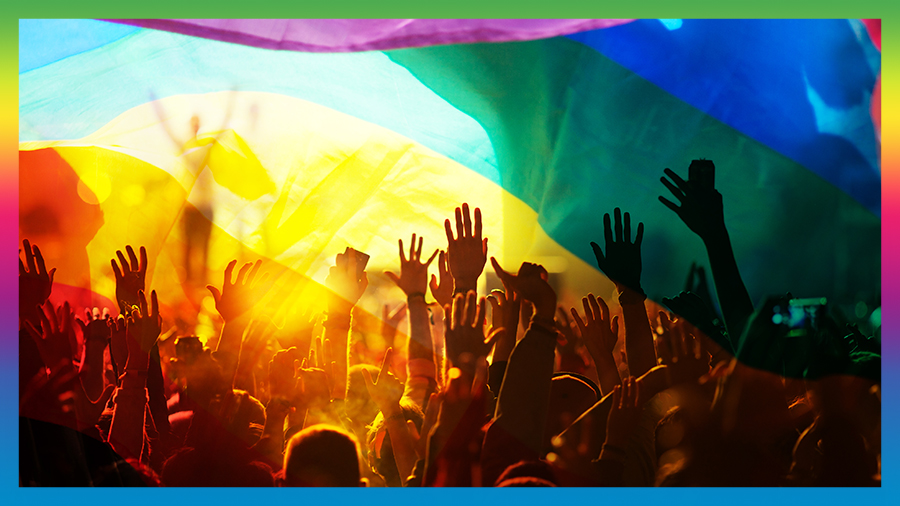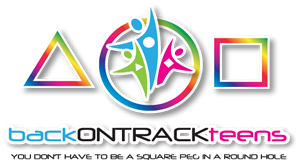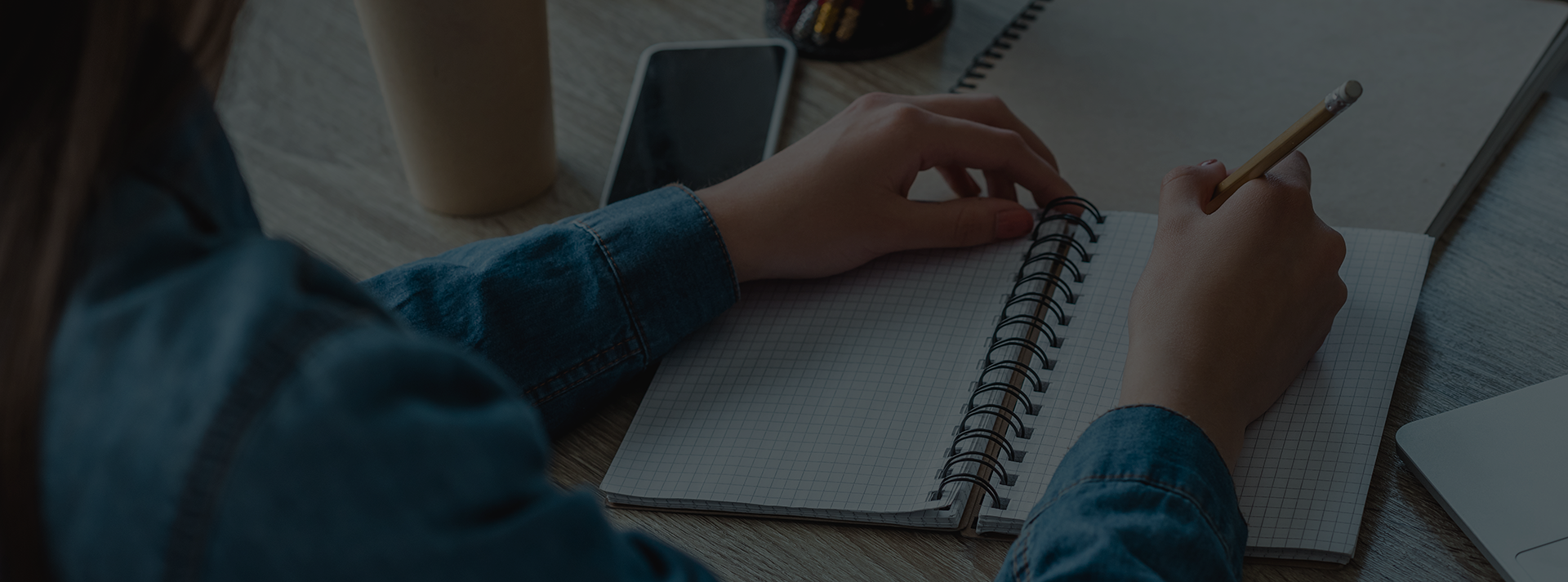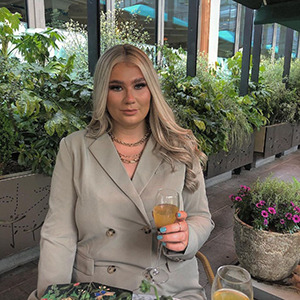
11 Oct Carolyn’s Story: I definitely felt … I couldn’t be a lesbian because I’m not butch and I wear makeup
Hey – thanks for having us on your screen. Welcome to the Back on Track Teens blog for young people and those young at heart.
You’ve loaded a blog article that’s part of a mini-series about gender and sexual identity*. The mini-series shares 11 wonderful and inspiring stories from young people who identify as LGBTQ+. Feel free to read on but you may want to pause and have a quick scan of the opening article to give a bit of context around the collection of stories and resources available. Please click here to read the first article.
“It’s scary whilst you’re in the closet but once you say it, there’s no going back” – Carolyn
The gender and sexual identity mini-series continues with an honest and insightful conversation about the relief, fear and pressure over coming out. Tayshan talks to 22-year-old Carolyn about stereotypes, labelling sexuality, and how sex-ed could be improved in schools for LGBTQ+ young people.
If you’re a parent or caregiver and your young person is questioning their identity, this blog might help you explore how to start a supportive and non-judgmental conversation with the young person in your life.
“I first realised early in high school maybe year 7 or 8, I didn’t have the same feelings as my friends towards boys. I didn’t realise straight away but saw more exposure on social media to being lesbian or gay and it developed in that way. I didn’t have a label for a few years.”
Carolyn is a passionate advocate of social media and explains how it can make a big difference for young people to see so many influencers who have come out. She feels strongly that being able to follow their stories is empowering in that you learn how you are not alone in your experience. Social media is a great way to amplify important voices representing the LGBTQ+ community and to normalise conversations around different sexual and gender identities.
What was it like to ‘come out’?
The first people Carolyn opened up to about her sexual preferences were her close friends in high school. She went to a Catholic school and felt that it was more common for people to know boys who were gay and bisexual, rather than girls. As a girl, identifying as a lesbian was seen to be more shocking and there was barely anyone in Carolyn’s school who openly identified as LGBTQ+.
“I did feel pressured to come out because I didn’t have any interest in boys, and I was at that age of starting to date. I felt pressure to share so that people knew and I didn’t have to keep it hidden. At that age it’s scary whilst you’re in the closet but once you say it, there’s no going back.”
Carolyn chose to share with her parents that she was bisexual and while there was some relief in coming out to her family, she personally still felt uncomfortable.
“At first, I decided I was bisexual because I felt that was more normal, but it wasn’t spoken about, and I wasn’t comfortable talking about it until years later. Since I’ve been in a relationship, that’s the only time I’ve felt comfortable.
The thing is you don’t just come out once. You do it all the time. Every new person you meet there’s a likelihood you might need to come out. It’s a lifelong journey. The more times you have to do it though, the more you feel comfortable and the more comfortable you feel with yourself.”
Discussing stereotypes and homophobia
As with any identity that exists in the minority, stereotypes can cause a lot of misunderstandings and harm. Stereotypes tend to reduce individuals down to lazy generalisations, grouping people in rigid terms. It ignores any individual nuances such as different characteristics, personalities, preferences, values and beliefs. No one person is the same and therefore stereotypes are often very unhelpful.
“I definitely felt at times when I was younger that I couldn’t be a lesbian because I’m not butch and I wear makeup and girly clothes, and I’m not into sports or anything. I think that’s why maybe I first came out as bisexual because that seemed more fitting.
It doesn’t matter, you can be whoever you want to be. Some people will find comfort in a label but labels can change, and you can change. How you identify can change.”
The importance of increasing representation and visibility
Carolyn has been lucky in that generally everyone has been accepting of her identity and her personal choices. Although she never experienced any homophobia to her face, at the end of one school year on a field trip, Carolyn remembers hearing from a friend about a girl saying she didn’t want to be in the same room as Carolyn in case she was looking at her.
Carolyn recalls this incident with humour and sees it as the other girl having insecurities. She also remembers an evening out where a group of men were trying to sexualise her and her girlfriend, which was uncomfortable.
Carolyn explains that she and her partner aren’t big on public displays of affection (PDA) and that this may be an unconscious decision linked to anxieties about the responses of other people.
These kinds of anxieties felt by LGBTQ+ people are a big part of the conversation around representation and visibility. For instance, people who are lesbians often experience harmful and reductive sexualisation through the straight male gaze. It’s been Carolyn’s experience that some heterosexual men can’t process the notion that two women can be in a romantic relationship together without it being for the man’s sexual titillation. It’s the outcome of a patriarchal society that a sexual and/or romantic relationship that does not involve a man is not real or valid.
What resources are out there to help people learn more?
At the beginning of her sexual orientation discovery, social media played the biggest part in Carolyn’s research and in finding support groups.
“When you don’t feel comfortable to talk to anyone [social media] gives you a barrier behind the screen to help you understand who you are and to clarify your own feelings. There are a lot of safe spaces online in the LGBTQ+ community and my friends helped a lot.
If you don’t have people close to you, social media helps to validate your experiences and what you’re going through. Finding people online, even if it’s just following them, is a good way to educate people, even if they don’t identify with [LGBTQ+].”
When Carolyn went to Manchester University, she became part of an LGBTQ+ society and attended the Manchester Pride festival. This helped her to feel part of a community and included in such a diverse group of people celebrating who they are.
“Knowing that there are people who identify as you do, being able to find people – that has some comfort.”
What advice would Carolyn offer to parents?
“I can only speak of my experience and that won’t be the same for everyone. I recommend educating yourself around the different identities and sexualities and to utilise social media as a really great space where people share information. It will help you to feel more confident to speak to your child, son, daughter and understand what everyone is going through. Try to start a conversation, which might seem uncomfortable, but the more you talk about it, the less uncomfortable you will feel. Even if you don’t understand, just listen and provide a safe space and let them know that you are there for them.”
For Carolyn, conversation and communication are key. It can be especially difficult for parents to have a conversation around their child’s sexual and/or gender identity if they don’t have at least an understanding of what kinds of identities exist out in the world. It’s a challenge to be there for loved ones if your own awareness of what they may be going through isn’t there. While it’s not a parent’s fault that they don’t already know about different gender or sexual identities, it is their responsibility to seek out the relevant information in a way that is, ideally, open-minded and non-judgemental.
How can sex education be improved in schools?
“I attended a Catholic high school so even straight sex education was not talked about. It was a taboo subject, so I think there needs to be increased normality, and that includes straight and LGBTQ+ sex education. Teachers feel awkward teaching it but that then carries on the narrative [so] yeah I think there needs to be a big change in schools.”
Carolyn believes that avoiding the subject can leave young people in dangerous situations. She thinks that the physical health and emotional part of sex education is just as important as the scientific explanation around male and female body parts and biological conception.
Historically, sex education in British schools has tended to be generally clinical in nature, focusing on the aspect of reproduction. Part of the taboo around sex education is that if we talk about sex, young people will go out and have it. In reality, information about sex or pornography is easily accessible online and in books and most young people will naturally seek to experiment through self-discovery.
Teaching young people about physical and psychological safety around sex and the importance of consent will help everyone’s knowledge. One example could be learning about contraception and protection aids other than condoms, such as dental dams for oral sex. Procreation is just one aspect of a certain type of sexual relationship, whereas a healthy understanding of the pleasure of sex is just as important to stay safe.
What advice would Carolyn give to her younger self if she got the chance?
“To accept myself [and] not try to fit in and believe you have to conform to stereotypes – to take the time to consider who you really are.” Carolyn
Listen to Carolyn's story
Choose the life you want to lead
How you identify in terms of sexuality and gender can often be an ever-evolving, individual journey. It may take time to figure out what makes you comfortable or bests reflects who you know yourself to be.
It’s not just people who identify as LGBTQ+ who feel uncomfortable about the decisions they make in life. It can really help to find people and places where you feel safe, connected and included.
There are many more blog articles in our gender and sexual identity mini-series and you can listen to the full podcast series here. Please share your experiences and helpful resources with us on social:
Find yourself and be yourself.
“The next time someone asks you why LGBT Pride marches exist or why Gay Pride Month is June tell them ‘A bisexual woman named Brenda Howard thought it should be.’ Brenda Howard
Thanks for reading…
Creating the gender and sexual identity mini-series has been an incredible experience for the Back on Track Teens team.
- I encourage you to go ahead and download our free eBook, which brings the interviews together with a huge collection of information, resources and inspiration.
- Subscribe to the Spark to Your Success podcast here.
- Access insightful stories, helpful exercises and more resources on our blog.
- Refer to the Back on Track Teens LGBTQ+ glossary here.
- Order ‘The Spark to Your Success – Helping Teens Build Resilience’ here.
- Order ‘The Spark to Your Success – Mindset Magic for Teens’ here.
Are you a parent or caregiver of a young person who may be experiencing challenges around gender and/or sexual identity? Book a session with TeeJay Dowe
Work at a school or organisation and want to know more? Book an awareness training session
*The blog articles capture real stories and the topic of conversation is frank. Its purpose is to elevate the voices of people within the LGBTQ+ community, answer questions, provide resources, and offer support.



No Comments